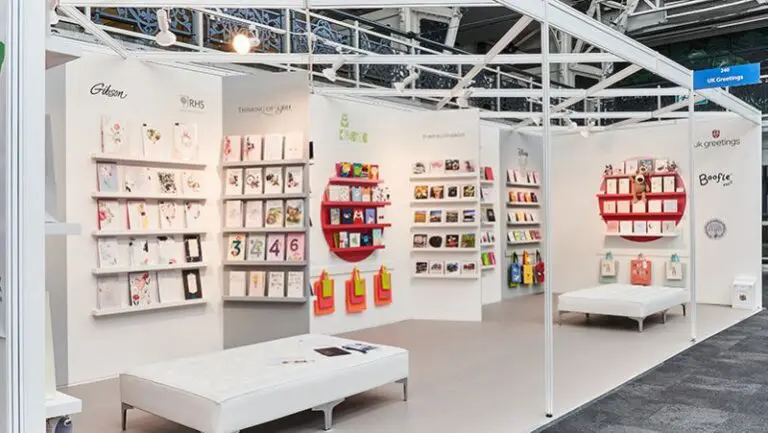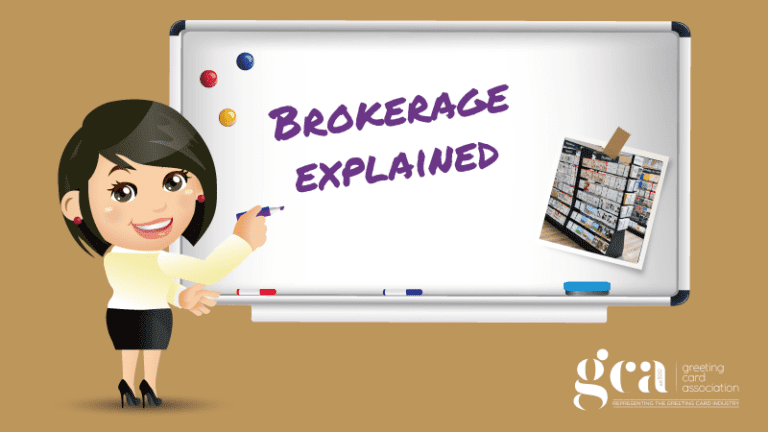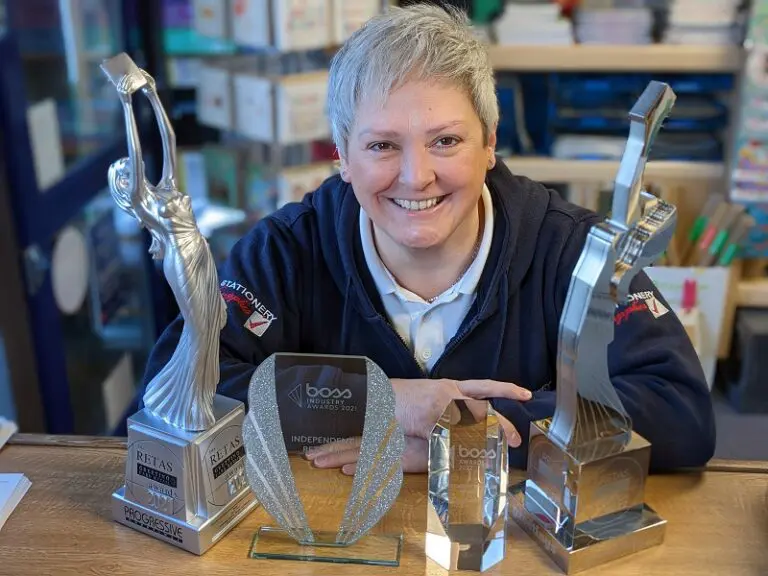
There are various ways to print and sell your designs, artwork, or photographic imagery on greeting cards these days, much depends on the input you wish to have in the production and selling of cards and your reason for producing cards in the first place. GCA member, Bev Cunningham of the Creative Card Collective , has penned this quick guide to the various routes to market, their suitability and tips when using each.
1. Licensing Artwork
A greeting card publisher licenses artwork from an artist for use on greeting cards for a set fee normally based on:
- Duration of the license (number of years)
- Territory (worldwide or UK only etc.)
- Exclusive or non-exclusive rights
If you just want to concentrate on being a creative and don’t want any dealings with the production, marketing or selling of cards then this is the route to market for you.
Pros: Normally work to a brief, therefore not too much speculative work needed. Often brief will be for a range of designs therefore commission can be for a decent number of designs. No stock holding or spending time on production and marketing issues.
Cons: A limit on what can be earned from each design. Although in some cases licences may be renewed when the term expires, however in most cases the fast turnover of designs in a publisher’s range mean that the design is discontinued when the term expires, so the design is rarely re-licensed. Working to a publisher’s brief may mean you create what they want for their market and not what you want to create and you may be required to make changes to the artwork before it is accepted by the publisher. Your artwork / image may be further worked on and changed by the in-house team to include captions or colour changes.
Top tip: Sign up with a specialist agent who knows the card industry well. They know the key publishers very well and the type of products they produce, so can match the right artist with the right publisher. As well as acting as a representative to promote your work and give guidance on style, timing of seasonal submissions, they also act as a go between artist and publisher from taking briefs to invoicing; leaving you to do what you do best, which is create the artwork.
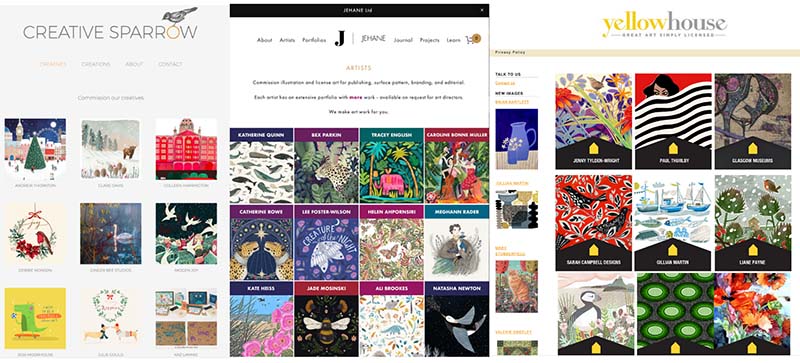
2. Using a specialist card printer
Commissioning a specialist card printer to print your images onto cards for you to sell physical cards to trade customers or consumers.
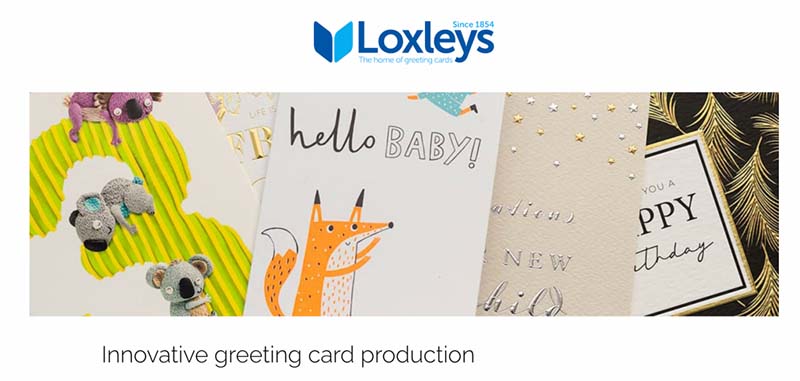
This route is suitable if you wish to concentrate mainly on selling cards / stationery products in decent volumes, particularly to trade customers (card shops etc.). Specialist printers can offer digital and litho printing, print custom sizes as well as offering a variety of finishing and packing options, including envelope collation. Some now even offer a print on demand and delivery direct to the retailer service.
Pros: You have total control over the product you create and enjoy the profit you make from any sales.
Cons: You need to spend a lot of time and investment on functions other than design … sales, production and marketing are all equally important as the creation of the designs. You need to invest money in stock holding and take risks on printing designs that you have no idea of how they will sell. It is a competitive market, whether you sell B2B or B2C.
Top Top: To have greater access to the market you will need to find sales agents to carry your cards as well as exhibit at trade shows. When designing for cards that are to be sold in shops, bear in mind how the card might be displayed; for example, any caption is best placed in the top third of the card so it can be seen clearly from a display where the cards overlap.3. Using a bespoke production company
Small volume orders taken for printing your own designs on set blank or “white label” products, such as cards, placemats, coasters, fridge magnets, cushions etc.
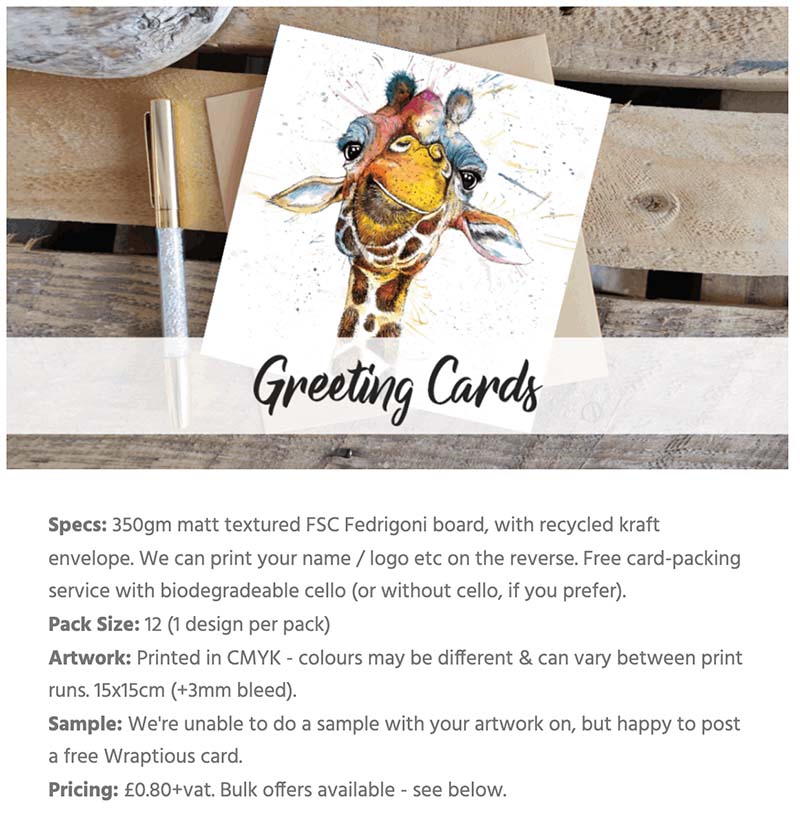
This option is great for artists / designers wanting to test the market or wanting to sell cards to support sales of say paintings or prints, without ordering huge volumes.
Pros: Can order in small quantities, cost effective way to test products. Envelopes come with cards, so no need to order envelopes separately.
Cons: Restricted by limited range of card sizes and boards, and standard envelopes. Low profit.
Top Tip: Request a sample, often offered free, of your design before ordering bulk. To check you’re happy with quality and colour reproduction.
4. Online print on demand Greeting Card Marketplace
An online marketplace dedicated to greeting cards. Artists upload artwork and the designs are printed on demand and shipped direct to consumer. The artist / designer then receives a commission every time the card is sold. Examples include Thortful, Card Isle, Grappzie.
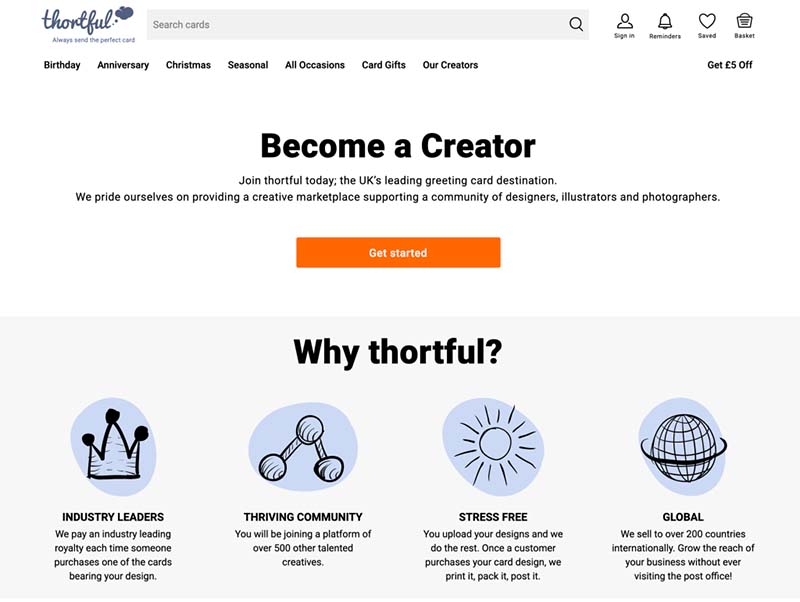
Pros: Passive income for small amount of work. Reach a wide online market. Can create topical designs and renew offering regularly without any investment in print or stock holding.
Cons: Restricted by the site’s standard sizes and no finishing available. Plenty of competition on these sites and customers may have to scroll through lots of other designs before they see yours. Sites may sell your designs as part of deals and offers, so you don’t have control over discounting.
Top tip: Need to design slightly different for an online customer, who is often looking for something they can’t find in card shops. An opportunity to go niche, with specific captions.
5. Using a print on demand, drop shipping company
The company controls all aspects of production, delivery, and payment. You upload your designs, generate a virtual mock-up and can either create your own site for or link the products to your existing sites, such as Etsy. You earn for every product sold minus the price of the blanks, production, and delivery.
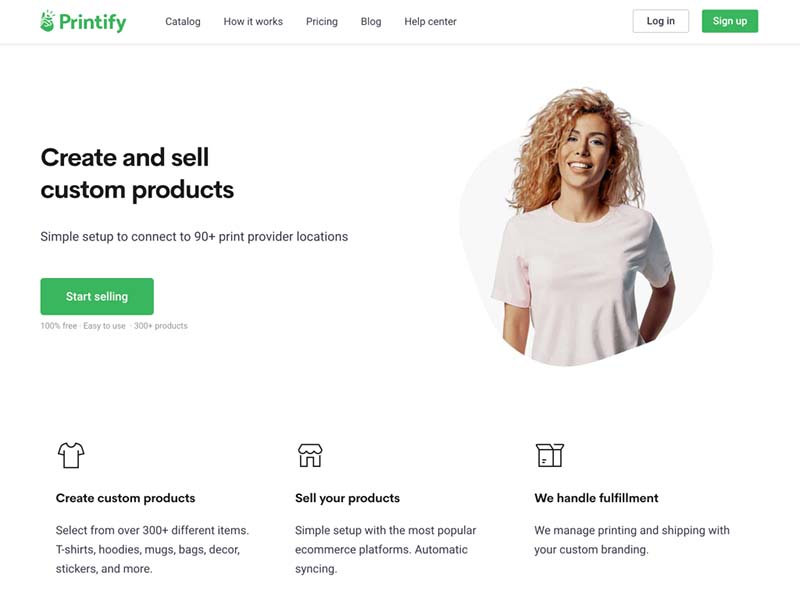
Printify is an example of a drop shipping supplier
Drop shipping is suitable for those not concentrating solely on cards and wanting to sell designs on a wide variety of products to consumers online only. It’s particularly a good way to test the market before investing greater stocks of products.
Pros: You can create products quickly. It’s low risk, as low investment. No stock holding, shipping and fulfilment taken care of. Accessible to a worldwide audience and you can link to your own online store.
Cons: Low profit margin. Limited choice of card sizes, board and no finishing available. Only online sales available. No control over service customers receives, reliant on third parties for production, quality of product and delivery.
Top tip: Shipping when using third parties can be complicated, so outline what customers can expect clearly in a FAQ page.
Further Information
See also Becoming a Greeting Card Designer – A Guide for Artist’s and An Insiders Guide to Publishing
Visit the GCA’s Members Library for lots more articles and support on all areas of greeting card production and supply.
To find out more about Creative Card Collective visit their website and read their Meet the Member entry on the GCA website .
